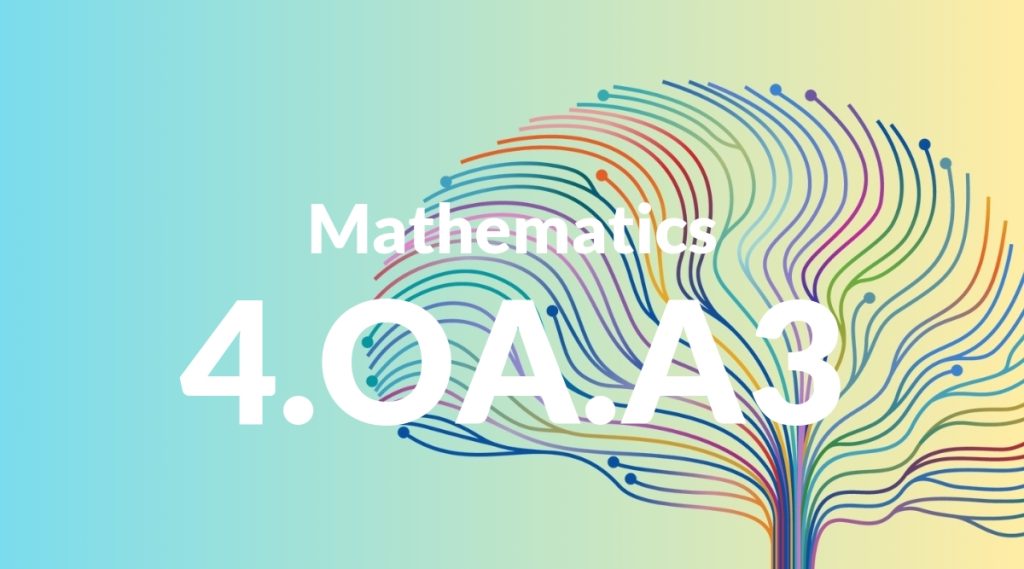Standard: 4.OA.A3 – Solve multistep word problems posed with whole numbers and having whole-number answers using the four operations, including problems in which remainders must be interpreted. Represent these problems using equations with a letter standing for the unknown quantity. Assess the reasonableness of answers using mental computation and estimation strategies including rounding.
Grade level: Grade 4
Subject: Mathematics
Domain: Operations & Algebraic Thinking
Teacher Overview
This standard focuses on solving multistep word problems using the four basic operations and interpreting remainders. It is crucial as it helps students develop critical thinking and problem-solving skills, which are essential for higher-level math and real-life applications. Students should have a solid understanding of basic arithmetic operations, be able to use variables to represent unknowns, and be familiar with estimation and rounding techniques.
Once students master this standard, they will be able to solve more complex mathematical problems and apply their skills to real-life situations, preparing them for advanced topics in mathematics.
Common Misconception 1
Some students may incorrectly discard remainders in all cases, thinking they are not important. This is incorrect because the interpretation of remainders depends on the context of the problem.
Intervention 1
Use context-based problems to show different ways to handle remainders. For example, in a division problem involving people, the remainder might indicate the number of people left without a seat.
Common Misconception 2
Students may ignore the order of operations, leading to incorrect answers. This misconception arises from a lack of understanding that operations must be performed in a specific sequence.
Intervention 2
Provide practice problems that require strict adherence to the order of operations. Use visual aids and interactive activities to reinforce the concept.
Prerequisite Knowledge
Students should be comfortable with basic addition, subtraction, multiplication, and division operations. They should also understand how to represent unknown quantities with variables and be familiar with basic estimation and rounding techniques.
Subsequent Knowledge
After mastering this standard, students will be able to tackle more complex algebraic equations and word problems. They will also develop improved problem-solving skills and a better understanding of how to apply mathematical operations in real-world scenarios.
Instructional Activities
- Create word problems based on real-life scenarios for students to solve in groups.
- Use manipulatives to visually represent division problems and remainders.
- Have students write and solve their own word problems, then exchange with a partner.
- Incorporate technology by using math problem-solving apps or online games.




